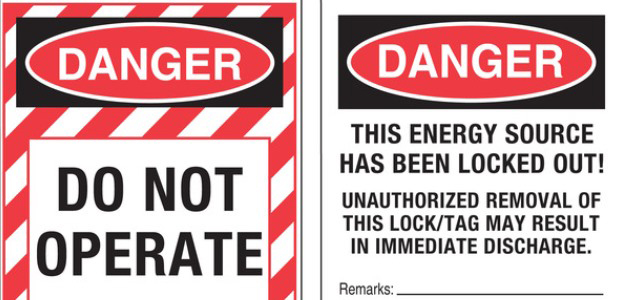Group Lockout Tagout (LOTO) is a critical safety procedure designed to protect workers from the release of hazardous energy during the maintenance and servicing of machinery and equipment. This process ensures that multiple employees working on the same equipment are safeguarded against unexpected energy release, thereby preventing injuries and fatalities. Understanding the specific requirements, procedures, and devices involved in group lockout is essential for maintaining safety and compliance in the workplace.
Visit Our Group Lockout Tagout Training Course Page
In industrial settings, where multiple workers might be involved in servicing or maintaining equipment, Group LOTO rocedures are essential to protect employees from the unexpected release of hazardous energy. This article delves into the requirements, processes, and purpose of Group Lockout/Tagout, a critical safety protocol mandated by regulatory bodies like OSHA.
What is the Purpose of Group Lockout?
The primary purpose of group lockout is to enhance the safety of multiple workers performing maintenance on the same equipment. By utilizing group lockout procedures, companies can:
- Ensure Comprehensive Safety: Group lockout ensures that all potential energy sources are isolated and that no single employee can inadvertently re-energize the equipment. This comprehensive approach significantly reduces the risk of injury.
- Promote Accountability: Each authorized employee is responsible for their lock, promoting a sense of accountability and awareness of the lockout process.
- Facilitate Coordination: Group lockout procedures require coordination and communication among all employees involved, fostering a collaborative safety culture.
- Maintain Compliance: Adhering to group lockout procedures ensures compliance with regulatory standards, such as OSHA’s control of hazardous energy requirements, thereby avoiding legal penalties and enhancing workplace safety.
What are the Requirements?
The requirements for group lockout tagout are outlined to ensure the control of hazardous energy during maintenance activities. These requirements include:
- Authorized Employee: Only employees who have received proper training and authorization can perform group lockout procedures. These authorized employees are responsible for applying and removing lockout devices.
- Control of Hazardous Energy: Procedures must be established to isolate and control all hazardous energy sources before any maintenance work begins. This includes identifying energy sources, shutting down equipment, and ensuring that all energy isolation points are effectively locked out.
- Group Lockout Devices: Utilize group lockout devices such as group lock boxes, group lockout boxes, and group lockout devices to secure energy isolation points. These devices allow multiple locks to be applied, ensuring that the equipment cannot be re-energized until all locks are removed.
- Lockout Tagout Compliance: Ensure that all group lockout procedures comply with OSHA regulations and company policies. This includes regular audits, training, and updating procedures as necessary to maintain compliance.
How Many Locks Are Used in a Group Lockout Process?
In a group lockout process, the number of locks used depends on the number of authorized employees involved in the maintenance work. Each authorized employee must apply their personal lockout device to the group lockbox or lock box. This ensures that the equipment cannot be re-energized until all employees have completed their tasks and removed their locks. The use of multiple locks provides a layer of safety, ensuring that no single employee can inadvertently restore energy to the equipment.
Which Device is Sometimes Used During a Group Lockout?
During a group lockout, a group lockbox is often used to facilitate the process. A group lockbox allows for the secure storage of keys from multiple lockout points. Once all energy isolation points are locked out, the keys are placed inside the group lockbox, and each authorized employee then applies their lock to the lockbox. This ensures that the equipment remains isolated from energy until all locks are removed, preventing accidental re-energization.
Implementing Effective Procedures
To implement effective group lockout tagout procedures, companies should:
- Conduct Training: Ensure that all employees, especially authorized employees, receive thorough training on group lockout procedures, the use of group lockout devices, and the importance of compliance.
- Establish Clear Procedures: Develop and document clear, step-by-step group lockout procedures tailored to the specific equipment and energy sources in the workplace. These procedures should detail the steps for isolating energy, applying locks, and verifying isolation.
- Use Appropriate Devices: Utilize the appropriate group lockout devices, such as group lock boxes and group lockout boxes, to secure keys and prevent accidental re-energization.
- Perform Regular Audits: Regularly audit the lockout tagout program to ensure compliance with safety standards and to identify areas for improvement. These audits should include checking the condition of lockout devices, verifying that procedures are followed correctly, and updating training as needed.
- Encourage Communication: Foster an environment of open communication where employees feel comfortable discussing safety concerns and suggesting improvements to lockout procedures.
Group LOTO is a vital safety procedure that protects workers from the hazards of uncontrolled energy during maintenance activities. By understanding the requirements, utilizing appropriate devices, and promoting a culture of safety and compliance, companies can effectively safeguard their employees and maintain a safe working environment.
